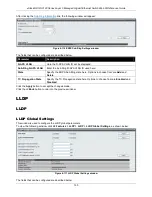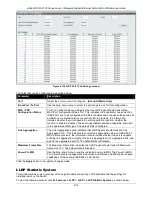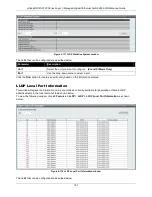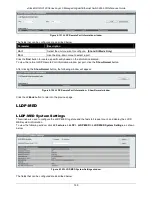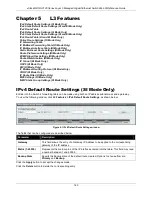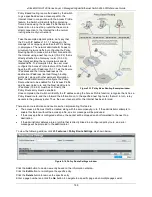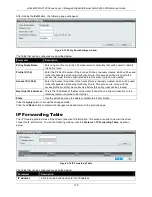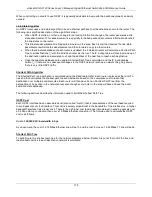
xStack® DGS-3120 Series Layer 3 Managed Gigabit Ethernet Switch Web UI Reference Guide
164
IPv4 Static/Default Route Settings (RI and EI Mode
Only)
The Switch supports static routing for IPv4 formatted addressing. Users can create up to 512 static route entries for
IPv4. For IPv4 static routes, once a static route has been set, the Switch will send an ARP request packet to the
next hop router that has been set by the user. Once an ARP response has been retrieved by the switch from that
next hop, the route becomes enabled. However, if the ARP entry already exists, an ARP response will not be sent.
The Switch also supports a floating static route, which means that the user may create an alternative static route to
a different next hop. This secondary next hop device route is considered as a backup static route for when the
primary static route is down. If the primary route is lost, the backup route will uplink and its status will become
Active.
Entries into the Switch’s forwarding table can be made using both an IP address subnet mask and a gateway.
To view the following window, click
L3 Features > IPv4 Static/Default Route Settings
, as shown below:
Figure 5-2 IPv4 Static/Default Route Settings window (RI Mode Only)
Figure 5-3 IPv4 Static/Default Route Settings window (EI Mode Only)
The fields that can be configured are described below:
Parameter
Description
IP Address
This field allows the entry of an IPv4 address to be assigned to the static route. Tick the
Default
check box to assign to the default route.
Netmask
This field allows the entry of a subnet mask to be applied to the corresponding subnet
mask of the IP address.
IP Tunnel Name
Tick the
IP Tunnel
option and enter the IP tunnel name used here.
(RI Mode Only)
Gateway
This field allows the entry of a Gateway IP Address to be applied to the corresponding
gateway of the IP address.
Metric (1-65535)
Represents the metric value of the IP interface entered into the table. This field may read
Summary of Contents for xStack DGS-3120 Series
Page 1: ......

